This article was co-authored by Monica Kieu, DO, FACS. Dr. Monica Kieu is a board certified Otolaryngologist and Specialist in Facial Plastic and Reconstructive Surgery in Los Angeles, California. Dr. Kieu received a BS in Anthropology from the University of California, Riverside and earned her medical degree (DO), with honors, from Western University of Health Sciences in Pomona. She then completed her residency in Otolaryngology-Head and Neck Surgery at Michigan State University/Detroit Medical Center, where she served as chief resident. Dr. Kieu also completed a prestigious fellowship in Facial Plastic and Reconstructive Surgery at the University of Toronto. She is a member of the American Academy of Otolaryngology-Head and Neck Surgery, American Osteopathic Colleges of Ophthalmology and Otolaryngology-Head and Neck Surgery, American Academy of Cosmetic Surgery, American Academy of Facial Plastic and Reconstructive Surgery, and the American Rhinologic Society. Dr. Kieu was recently named one of LA’s Top Docs by Los Angeles Magazine.
There are 8 references cited in this article, which can be found at the bottom of the page.
wikiHow marks an article as reader-approved once it receives enough positive feedback. In this case, 82% of readers who voted found the article helpful, earning it our reader-approved status.
This article has been viewed 454,097 times.
Even though it’s instinctual to blow your nose when it’s clogged, it can actually do more harm than good if done incorrectly. Blowing your nose too hard can inflame the blood vessels in your nose or lead to a sinus infection. Luckily, blowing your nose correctly is simple as long as you blow gently and follow the right steps. You can also take further steps to reduce or stop your runny nose, which may eliminate the need to blow it all together.
Steps
Blowing your Nose Properly
-
1Hold a tissue or handkerchief over your nose. Place the tissue or handkerchief over your nose and hold it there. Tissues prevent the spread of germs because you throw them away after use while handkerchiefs are more likely to spread germs, but are more environmentally friendly than tissues.[1]
- If you have the cold, flu, or another virus, it may be beneficial to use tissues to prevent the spread of germs. If you have allergies, a handkerchief may be the better option.
- If you don’t have tissues or a handkerchief, you can use toilet paper as an alternative. Avoid blowing your nose with coarser materials like paper towels or napkins.
- If you have sensitive skin, consider purchasing tissues that have lotion in them.
-
2Press a finger against one of your nostrils to close it off. You shouldn’t be able to breathe out of that nostril. Keep the tissue or handkerchief over your nose so that you don’t get mucus on your hands.[2]
- It's generally polite to excuse yourself from the table when you blow your nose.
- If you're in a public situation, consider going to the bathroom or closing your office door before blowing your nose.
Advertisement -
3Blow the open nostril into the tissue or handkerchief gently. Blow with as little force as you possibly can. Blowing too hard could cause mucus to go up into your sinuses which could cause an infection and worsen your symptoms. If you blow and nothing comes out, do not blow again.[3]
- Remember to wipe up excess mucus on the outside of your nose when you've finished blowing.
- Blowing your nose too hard could also make the blood vessels in your nose more inflamed. If nothing comes out, it means that your mucus is too thick or your nose is clogged higher up.
-
4Repeat the process on the other nostril. Press down on your other nostril and gently blow the mucus out the nostril you held closed before. If done properly, you’ll have properly blown your nose without infecting your sinuses.[4]
- Blowing one nostril at a time will help expel mucus easier.
- Throw away the tissue after you blow your nose so that you don't spread germs.
-
5Squeeze the mucus out of your nose instead of blowing it. Squeeze at the center of your nose and push down towards your nostrils to push the mucus out. This is an alternative to blowing your nose that will prevent you from accidentally blowing too hard.[5]
-
6Wash your hands. Lather your hands with soap and rinse them thoroughly under the faucet. Then, dry them off with a towel or rag. This will prevent the spread of germs and will reduce the chance of getting other people sick.[6]
- Antibacterial soap is no better at removing germs than traditional soap.
Loosening and Preventing Mucus
-
1Take decongestants or antihistamines to prevent mucus. Over-the-counter decongestants and antihistamines may reduce the amount of mucus and congestion from a sinus infection or cold. These medicines usually come in pill or spray form and can be found at pharmacies.[7]
- Antihistamines are more effective at treating symptoms of hay fever or allergies and are less effective at treating a cold or flu.
-
2Spray a saline spray up your nose. You can purchase a saline spray over the counter at a pharmacy or department store. Hold the spray near the opening of your nostril and spray the solution into each nostril.[8]
- Saline spray reduces mucus buildup in your nose.
-
3Apply a warm compress over your nose to loosen mucus. Hold a washcloth under hot running water and wring it out. Press the compress over your nose and forehead for 1-2 minutes. This should reduce your congestion and potentially loosen any mucus in your nose.
-
4Inhale steam with eucalyptus oil in it to help your sinuses drain. Boil a pot of water over your stovetop and put a couple drops of eucalyptus oil in it. Once it starts boiling, inhale the steam that comes off the water. This should reduce your congestion and make blowing your nose much easier.
- If you don't have eucalyptus, then inhaling steam may still reduce your runny or stuffy nose.
-
5Avoid known allergens to prevent clogged sinuses. Reducing your exposure to the allergens will cut down on your runny nose and congestion so that you don’t have the urge to blow it as often. Commonly people are allergic to animal dander and pollen.[9]
- You can ask your doctor to take an allergy test if you’re unsure if you have any allergies.
- If your nose is stuffy due to allergies, taking an over-the-counter allergy medication can help.[10]
Expert Q&A
Did you know you can get expert answers for this article?
Unlock expert answers by supporting wikiHow
-
QuestionHow can I thin nasal mucus?
 Monica Kieu, DO, FACSDr. Monica Kieu is a board certified Otolaryngologist and Specialist in Facial Plastic and Reconstructive Surgery in Los Angeles, California. Dr. Kieu received a BS in Anthropology from the University of California, Riverside and earned her medical degree (DO), with honors, from Western University of Health Sciences in Pomona. She then completed her residency in Otolaryngology-Head and Neck Surgery at Michigan State University/Detroit Medical Center, where she served as chief resident. Dr. Kieu also completed a prestigious fellowship in Facial Plastic and Reconstructive Surgery at the University of Toronto. She is a member of the American Academy of Otolaryngology-Head and Neck Surgery, American Osteopathic Colleges of Ophthalmology and Otolaryngology-Head and Neck Surgery, American Academy of Cosmetic Surgery, American Academy of Facial Plastic and Reconstructive Surgery, and the American Rhinologic Society. Dr. Kieu was recently named one of LA’s Top Docs by Los Angeles Magazine.
Monica Kieu, DO, FACSDr. Monica Kieu is a board certified Otolaryngologist and Specialist in Facial Plastic and Reconstructive Surgery in Los Angeles, California. Dr. Kieu received a BS in Anthropology from the University of California, Riverside and earned her medical degree (DO), with honors, from Western University of Health Sciences in Pomona. She then completed her residency in Otolaryngology-Head and Neck Surgery at Michigan State University/Detroit Medical Center, where she served as chief resident. Dr. Kieu also completed a prestigious fellowship in Facial Plastic and Reconstructive Surgery at the University of Toronto. She is a member of the American Academy of Otolaryngology-Head and Neck Surgery, American Osteopathic Colleges of Ophthalmology and Otolaryngology-Head and Neck Surgery, American Academy of Cosmetic Surgery, American Academy of Facial Plastic and Reconstructive Surgery, and the American Rhinologic Society. Dr. Kieu was recently named one of LA’s Top Docs by Los Angeles Magazine.
Board Certified Otolaryngologist It really depends on the cause of it. A runny nose can be caused by something as simple as an allergy, or it could be caused by a viral or bacterial infection. If it's something that you're getting all the time even though you otherwise feel fine, it may be due to allergies. In that case, you would want to be treating yourself with some antihistamines, like Claritin, Zyrtec, or Allegra. If you have an infection, that's when you need to see somebody.
It really depends on the cause of it. A runny nose can be caused by something as simple as an allergy, or it could be caused by a viral or bacterial infection. If it's something that you're getting all the time even though you otherwise feel fine, it may be due to allergies. In that case, you would want to be treating yourself with some antihistamines, like Claritin, Zyrtec, or Allegra. If you have an infection, that's when you need to see somebody. -
QuestionWhat should I do if my nose burns and has a rash?
 Jurdy Dugdale, RNJurdy Dugdale is a Registered Nurse in Florida. She received her Nursing License from the Florida Board of Nursing in 1989.
Jurdy Dugdale, RNJurdy Dugdale is a Registered Nurse in Florida. She received her Nursing License from the Florida Board of Nursing in 1989.
Medical Review Board
-
QuestionHow would we apply hygienic practices to nose blowing?
 Jurdy Dugdale, RNJurdy Dugdale is a Registered Nurse in Florida. She received her Nursing License from the Florida Board of Nursing in 1989.
Jurdy Dugdale, RNJurdy Dugdale is a Registered Nurse in Florida. She received her Nursing License from the Florida Board of Nursing in 1989.
Medical Review Board The number one way to make your nose blowing more hygienic is to do it in private, away from others. This prevents spreading airborne germs. You should also wrap your tissues in a plastic bag before throwing them away and wash your hands more often than usual. If you can't get to a sink, clean your hands with hand sanitizer.
The number one way to make your nose blowing more hygienic is to do it in private, away from others. This prevents spreading airborne germs. You should also wrap your tissues in a plastic bag before throwing them away and wash your hands more often than usual. If you can't get to a sink, clean your hands with hand sanitizer.
Things You'll Need
- Tissues or handkerchief
- Decongestant or antihistamine (optional)
- Warm compress (optional)
- Eucalyptus oil (optional)
References
- ↑ https://www.health24.com/Medical/Flu/Spreading-the-flu/tissue-or-handkerchief-which-is-better-20170601
- ↑ https://www.mirror.co.uk/lifestyle/health/you-blow-your-nose-correctly-7431812
- ↑ https://youtu.be/yWrc4ipZ31s?t=25s
- ↑ https://www.webmd.com/cold-and-flu/qa/whats-the-best-way-to-blow-your-nose-when-sick
- ↑ https://youtu.be/043R6ZOICCM?t=52s
- ↑ https://www.mayoclinic.org/healthy-lifestyle/adult-health/in-depth/hand-washing/art-20046253
- ↑ Monica Kieu, DO, FACS. Board Certified Otolaryngologist. Expert Interview. 20 October 2020.
- ↑ https://www.mayoclinic.org/symptoms/nasal-congestion/basics/when-to-see-doctor/sym-20050644
- ↑ https://www.mayoclinic.org/symptoms/nasal-congestion/basics/when-to-see-doctor/sym-20050644
- ↑ Monica Kieu, DO, FACS. Board Certified Otolaryngologist. Expert Interview. 20 October 2020.
About This Article
To blow your nose when you're having trouble, first, loosen up the mucus. One way you can do this is to place a warm, damp washcloth over your nose and forehead for 2 minutes. You can also try a steam treatment, by either sitting over a bowl of hot water with a towel over your head or taking a hot shower to open your airways. Once your mucus has been loosened, hold a tissue over your nose. Next, close one nostril by pressing your finger against your nose. Blow air through your nose one nostril at a time so you can blow with more force. If you're still feeling stuffy after that, consider taking an over-the-counter decongestant to clear things up. To learn other ways you can loosen mucus and decongest your nose, scroll down!
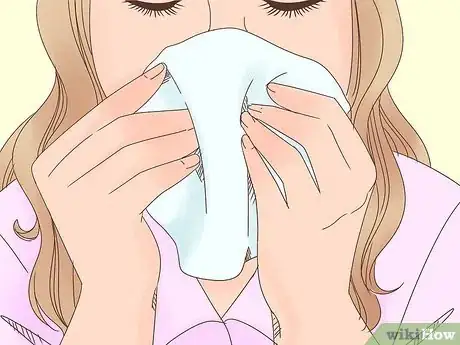


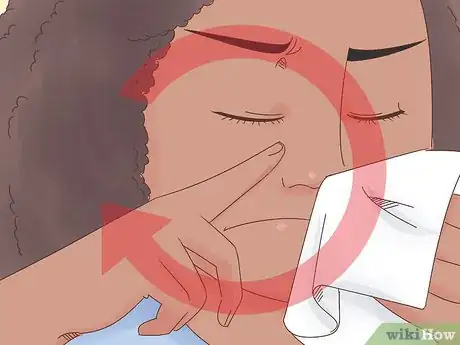


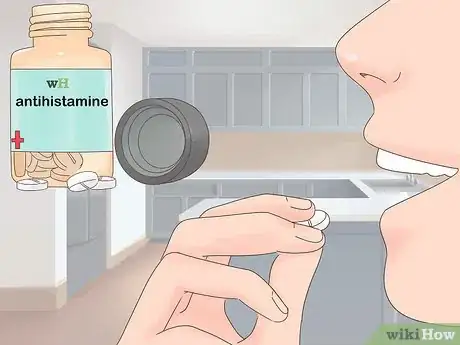






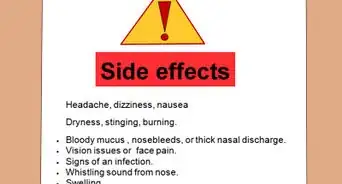
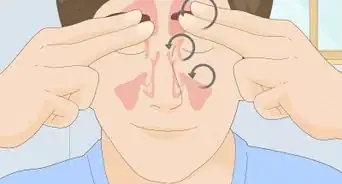
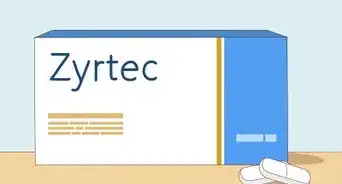



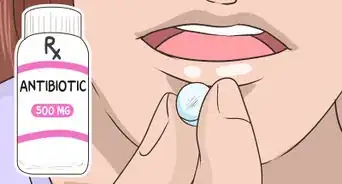
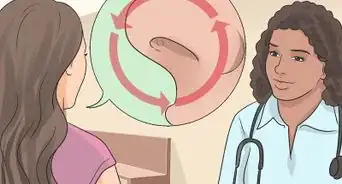

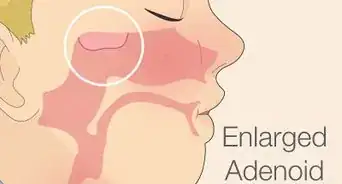













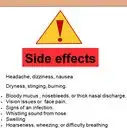
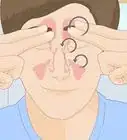




































Medical Disclaimer
The content of this article is not intended to be a substitute for professional medical advice, examination, diagnosis, or treatment. You should always contact your doctor or other qualified healthcare professional before starting, changing, or stopping any kind of health treatment.
Read More...